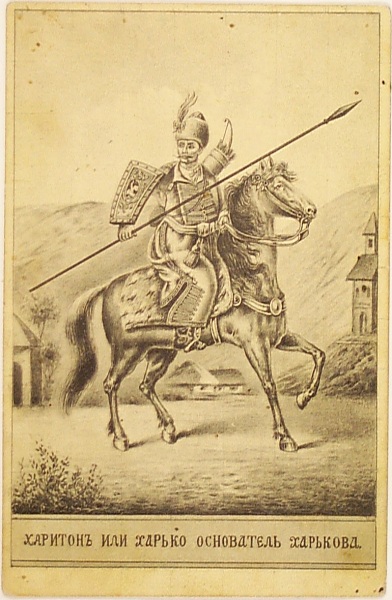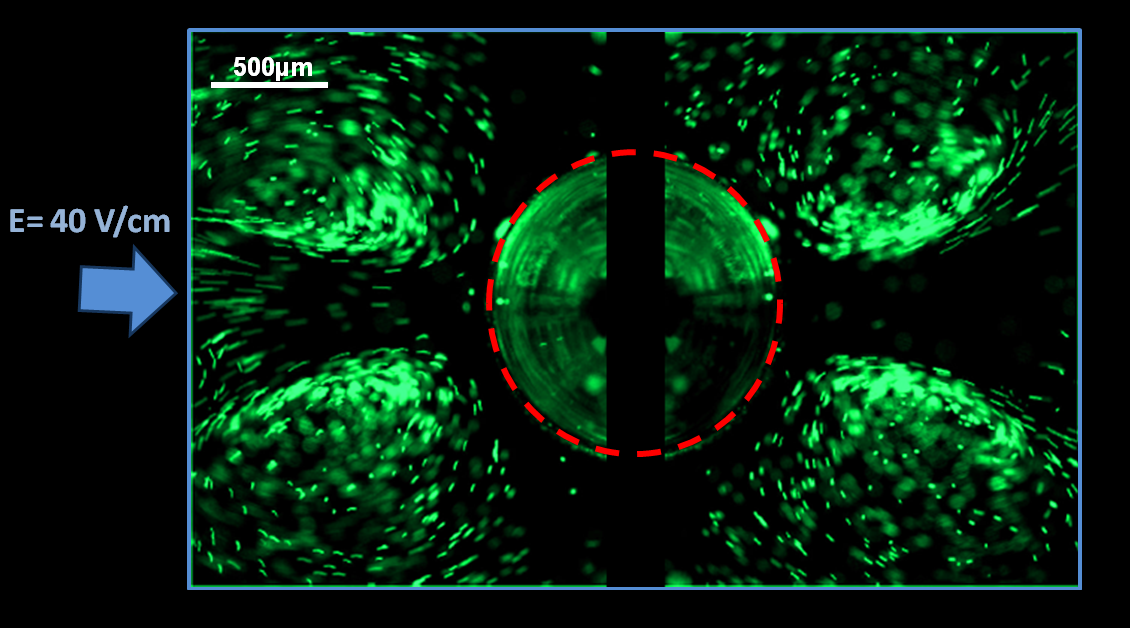|
Veniamin Grigorievich Levich
Veniamin Grigorievich (Benjamin) Levich (russian: Вениами́н Григо́рьевич Ле́вич; 30 March 1917 in Kharkiv, Ukraine – 19 January 1987 in Englewood, New Jersey, United States) was a Soviet dissident, internationally prominent physical chemist, electrochemist and founder of the discipline of physico-chemical hydrodynamics. He was a student of the theoretical physicist, Lev Landau. His landmark textbook titled ''Physicochemical Hydrodynamics'' is widely considered his most important contribution to science. The Levich equation describing a current at a rotating disk electrode is named after him. His research activities also included gas-phase collision reactions, electrochemistry, and the quantum mechanics of electron transfer. Levich received many honors during his life, including the Olin Palladium Award of The Electrochemical Society in 1973. He was elected a foreign member of the Norwegian Academy of Sciences in 1977 and a foreign associate of the U.S. ... [...More Info...] [...Related Items...] OR: [Wikipedia] [Google] [Baidu] |
Kharkiv
Kharkiv ( uk, wikt:Харків, Ха́рків, ), also known as Kharkov (russian: Харькoв, ), is the second-largest List of cities in Ukraine, city and List of hromadas of Ukraine, municipality in Ukraine.Kharkiv "never had eastern-western conflicts" ''Euronews'' (23 October 2014) Located in the northeast of the country, it is the largest city of the historic Sloboda Ukraine, Slobozhanshchyna region. Kharkiv is the administrative centre of Kharkiv Oblast and of the surrounding Kharkiv Raion. The latest population is Kharkiv was founded in 1654 as Kharkiv fortress, and after these humble beginnings, it grew to be a major centre of industry, trade and Ukrainian culture in the Russian Empire. At the beginning of the 20th century, ... [...More Info...] [...Related Items...] OR: [Wikipedia] [Google] [Baidu] |
Russian Academy Of Sciences
The Russian Academy of Sciences (RAS; russian: Росси́йская акаде́мия нау́к (РАН) ''Rossíyskaya akadémiya naúk'') consists of the national academy of Russia; a network of scientific research institutes from across the Russian Federation; and additional scientific and social units such as libraries, publishing units, and hospitals. Peter the Great established the Academy (then the St. Petersburg Academy of Sciences) in 1724 with guidance from Gottfried Leibniz. From its establishment, the Academy benefitted from a slate of foreign scholars as professors; the Academy then gained its first clear set of goals from the 1747 Charter. The Academy functioned as a university and research center throughout the mid-18th century until the university was dissolved, leaving research as the main pillar of the institution. The rest of the 18th century continuing on through the 19th century consisted of many published academic works from Academy scholars and a few Ac ... [...More Info...] [...Related Items...] OR: [Wikipedia] [Google] [Baidu] |
Soviet Dissidents
Soviet dissidents were people who disagreed with certain features of Soviet ideology or with its entirety and who were willing to speak out against them. The term ''dissident'' was used in the Soviet Union in the period from the mid-1960s until the fall of communism.Chronicle of Current Events (samizdat) It was used to refer to small groups of marginalized intellectuals whose challenges, from modest to radical to the Soviet regime, met protection and encouragement from correspondents and typically criminal prosecution or other forms of silencing by the authorities. Following the etymology of the term, a dissident is considered to "sit apart" from the regime. As dissenters began self-identifying as ''dissidents'', the term came to refer to an individual whose non-conformism was perceived to be for the good of a society. [...More Info...] [...Related Items...] OR: [Wikipedia] [Google] [Baidu] |
Corresponding Members Of The USSR Academy Of Sciences
Correspondence may refer to: *In general usage, non-concurrent, remote communication between people, including letters, email, newsgroups, Internet forums, blogs. Science *Correspondence principle (physics): quantum physics theories must agree with classical physics theories when applied to large quantum numbers *Correspondence principle (sociology), the relationship between social class and available education *Correspondence problem (computer vision), finding depth information in stereography *Regular sound correspondence (linguistics), see Comparative method (linguistics) Mathematics * Binary relation ** 1:1 correspondence, an older name for a bijection ** Multivalued function * Correspondence (algebraic geometry), between two algebraic varieties * Correspondence (category theory), the opposite of a profunctor * Correspondence (von Neumann algebra) or bimodule, a type of Hilbert space * Correspondence analysis, a multivariate statistical technique Philosophy and religio ... [...More Info...] [...Related Items...] OR: [Wikipedia] [Google] [Baidu] |
National University Of Kharkiv Alumni
National may refer to: Common uses * Nation or country ** Nationality – a ''national'' is a person who is subject to a nation, regardless of whether the person has full rights as a citizen Places in the United States * National, Maryland, census-designated place * National, Nevada, ghost town * National, Utah, ghost town * National, West Virginia, unincorporated community Commerce * National (brand), a brand name of electronic goods from Panasonic * National Benzole (or simply known as National), former petrol station chain in the UK, merged with BP * National Car Rental, an American rental car company * National Energy Systems, a former name of Eco Marine Power * National Entertainment Commission, a former name of the Media Rating Council * National Motor Vehicle Company, Indianapolis, Indiana, USA 1900-1924 * National Supermarkets, a defunct American grocery store chain * National String Instrument Corporation, a guitar company formed to manufacture the first resonator g ... [...More Info...] [...Related Items...] OR: [Wikipedia] [Google] [Baidu] |
Fluid Dynamicists
In physics, a fluid is a liquid, gas, or other material that continuously deforms (''flows'') under an applied shear stress, or external force. They have zero shear modulus, or, in simpler terms, are substances which cannot resist any shear force applied to them. Although the term ''fluid'' generally includes both the liquid and gas phases, its definition varies among branches of science. Definitions of ''solid'' vary as well, and depending on field, some substances can be both fluid and solid. Viscoelastic fluids like Silly Putty appear to behave similar to a solid when a sudden force is applied. Substances with a very high viscosity such as pitch appear to behave like a solid (see pitch drop experiment) as well. In particle physics, the concept is extended to include fluidic matters other than liquids or gases. A fluid in medicine or biology refers any liquid constituent of the body (body fluid), whereas "liquid" is not used in this sense. Sometimes liquids given for fluid ... [...More Info...] [...Related Items...] OR: [Wikipedia] [Google] [Baidu] |
1987 Deaths
File:1987 Events Collage.png, From top left, clockwise: The MS Herald of Free Enterprise capsizes after leaving the Port of Zeebrugge in Belgium, killing 193; Northwest Airlines Flight 255 crashes after takeoff from Detroit Metropolitan Airport, killing everyone except a little girl; The King's Cross fire kills 31 people after a fire under an escalator Flashover, flashes-over; The MV Doña Paz sinks after colliding with an oil tanker, drowning almost 4,400 passengers and crew; Typhoon Nina (1987), Typhoon Nina strikes the Philippines; LOT Polish Airlines Flight 5055 crashes outside of Warsaw, taking the lives of all aboard; The USS Stark is USS Stark incident, struck by Iraq, Iraqi Exocet missiles in the Persian Gulf; President of the United States, U.S. President Ronald Reagan gives a famous Tear down this wall!, speech, demanding that Soviet Union, Soviet leader Mikhail Gorbachev tears down the Berlin Wall., 300x300px, thumb rect 0 0 200 200 Zeebrugge disaster rect 200 0 400 200 ... [...More Info...] [...Related Items...] OR: [Wikipedia] [Google] [Baidu] |
1917 Births
Events Below, the events of World War I have the "WWI" prefix. January * January 9 – WWI – Battle of Rafa: The last substantial Ottoman Army garrison on the Sinai Peninsula is captured by the Egyptian Expeditionary Force's Desert Column. * January 10 – Imperial Trans-Antarctic Expedition: Seven survivors of the Ross Sea party were rescued after being stranded for several months. * January 11 – Unknown saboteurs set off the Kingsland Explosion at Kingsland (modern-day Lyndhurst, New Jersey), one of the events leading to United States involvement in WWI. * January 16 – The Danish West Indies is sold to the United States for $25 million. * January 22 – WWI: United States President Woodrow Wilson calls for "peace without victory" in Germany. * January 25 ** WWI: British armed merchantman is sunk by mines off Lough Swilly (Ireland), with the loss of 354 of the 475 aboard. ** An anti- prostitution drive in San Francisco occurs, and ... [...More Info...] [...Related Items...] OR: [Wikipedia] [Google] [Baidu] |
Induced-charge Electrokinetics
Induced-charge electrokinetics in physics is the electrically driven fluid flow and particle motion in a liquid electrolyte.V. G. Levich, Physicochemical Hydrodynamics. Englewood Cliffs, N.J., Prentice-Hall, (1962) Consider a metal particle (which is neutrally charged but electrically conducting) in contact with an aqueous solution in a chamber/channel. If different voltages apply to the end of this chamber/channel, electric field will generate in this chamber/channel. This applied electric field passes through this metal particle and causes the free charges inside the particle migrate under the skin of particle. As a result of this migration, the negative charges moves to the side which is close to the positive (or higher) voltage while the positive charges moves to the opposite side of the particle. These charges under the skin of conducting particle attract the counter-ions of the aqueous solution; thus, the electric double layer (EDL) forms around the particle. The EDL sign ... [...More Info...] [...Related Items...] OR: [Wikipedia] [Google] [Baidu] |
Koutecký–Levich Equation
The Koutecký–Levich equation models the measured electric current at an electrode from an electrochemical reaction in relation to the kinetic activity and the mass transport of reactants. The Koutecký–Levich equation can be written as'':'' =+ where * ''i''m is the measured current (A). * ''i''K is the kinetic current (A) from the electrochemical reactions. * ''i''MT is the mass transport current (A). Note the similarity of this equation to the conductance of an electrical circuits in parallel. The Koutecký–Levich equation is also commonly expressed as: i_m= The kinetic current (''i''K) can be modeled by the Butler-Volmer Equation and is characterized by being potential dependent. On the other hand, the mass transport current (''i''MT) depends on the particular electrochemical setup and amount of stirring. Koutecký–Levich plot In the case a rotating disk electrode setup is used and the electrode is flat and smooth, the ''i''MT can modeled using the Le ... [...More Info...] [...Related Items...] OR: [Wikipedia] [Google] [Baidu] |
Levich Constant
A Levich constant (B) is often used in order to simplify the Levich equation. Furthermore, B is readily extracted from rotating disk electrode experimental data. The B can be defined as: B= (0.620) n F A D^\fracv^\fracC where * ''n'' is the number of moles of electrons transferred in the half reaction (number) * ''F'' is the Faraday constant (C/mol) * ''A'' is the electrode area (cm2) * ''D'' is the diffusion coefficient (see Fick's law of diffusion) (cm2/s) * ''v'' is the kinematic viscosity (cm2/s) * ''C'' is the analyte An analyte, component (in clinical chemistry), or chemical species is a substance or chemical constituent that is of interest in an analytical procedure. The purest substances are referred to as analytes, such as 24 karat gold, NaCl, water, etc. ... concentration (mol/cm3) References Electrochemical equations Electrochemistry {{electrochem-stub ... [...More Info...] [...Related Items...] OR: [Wikipedia] [Google] [Baidu] |





